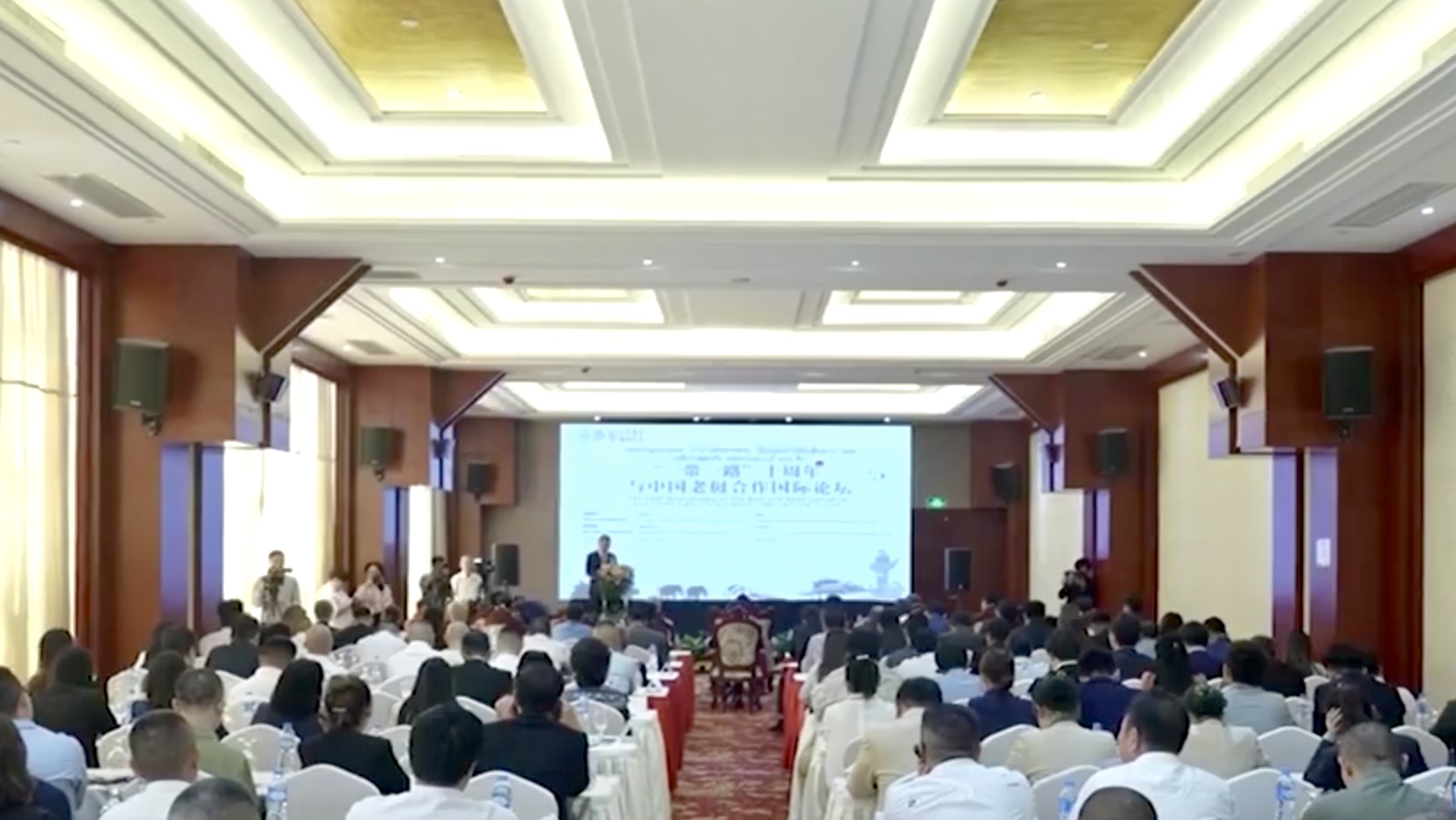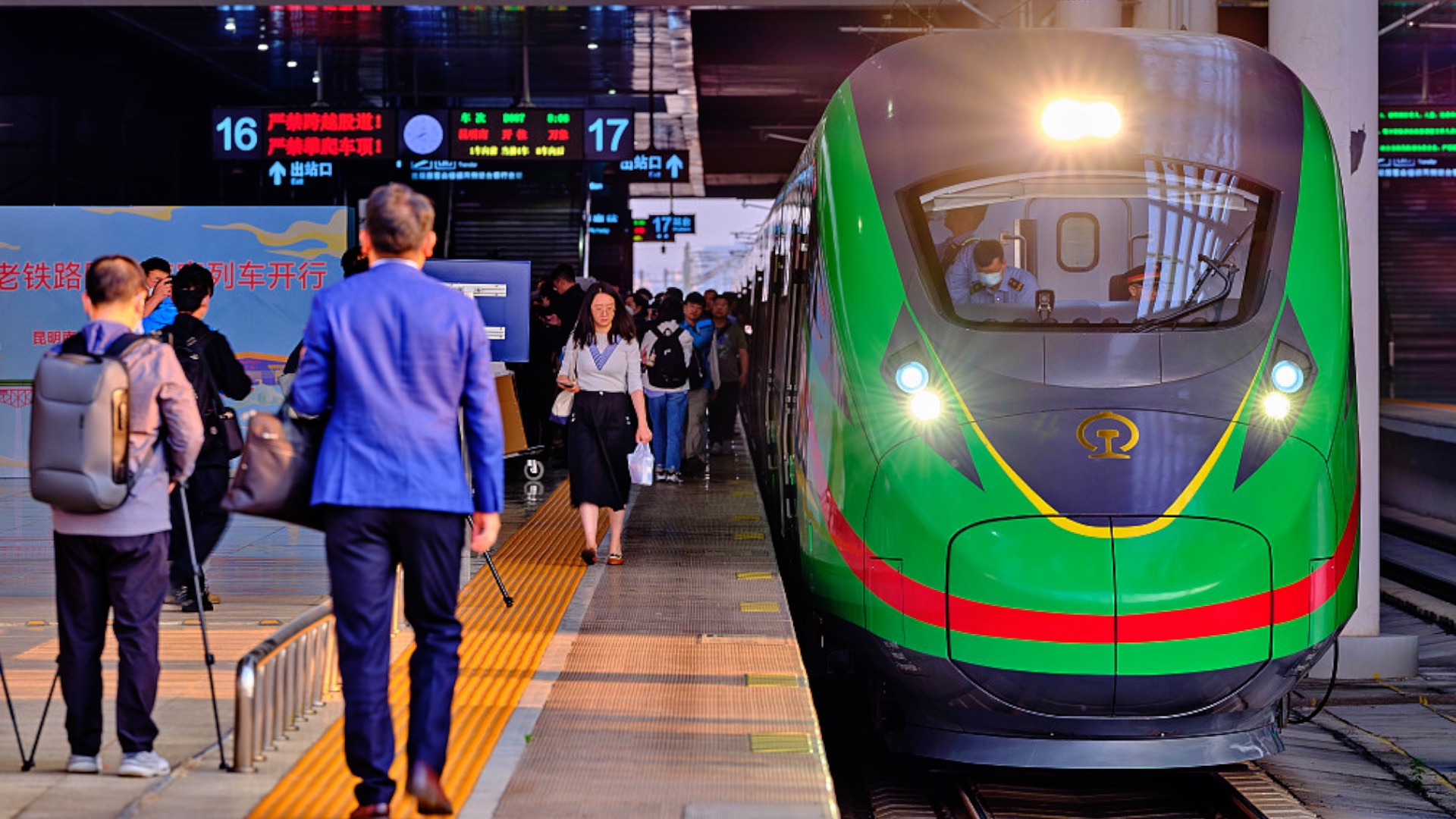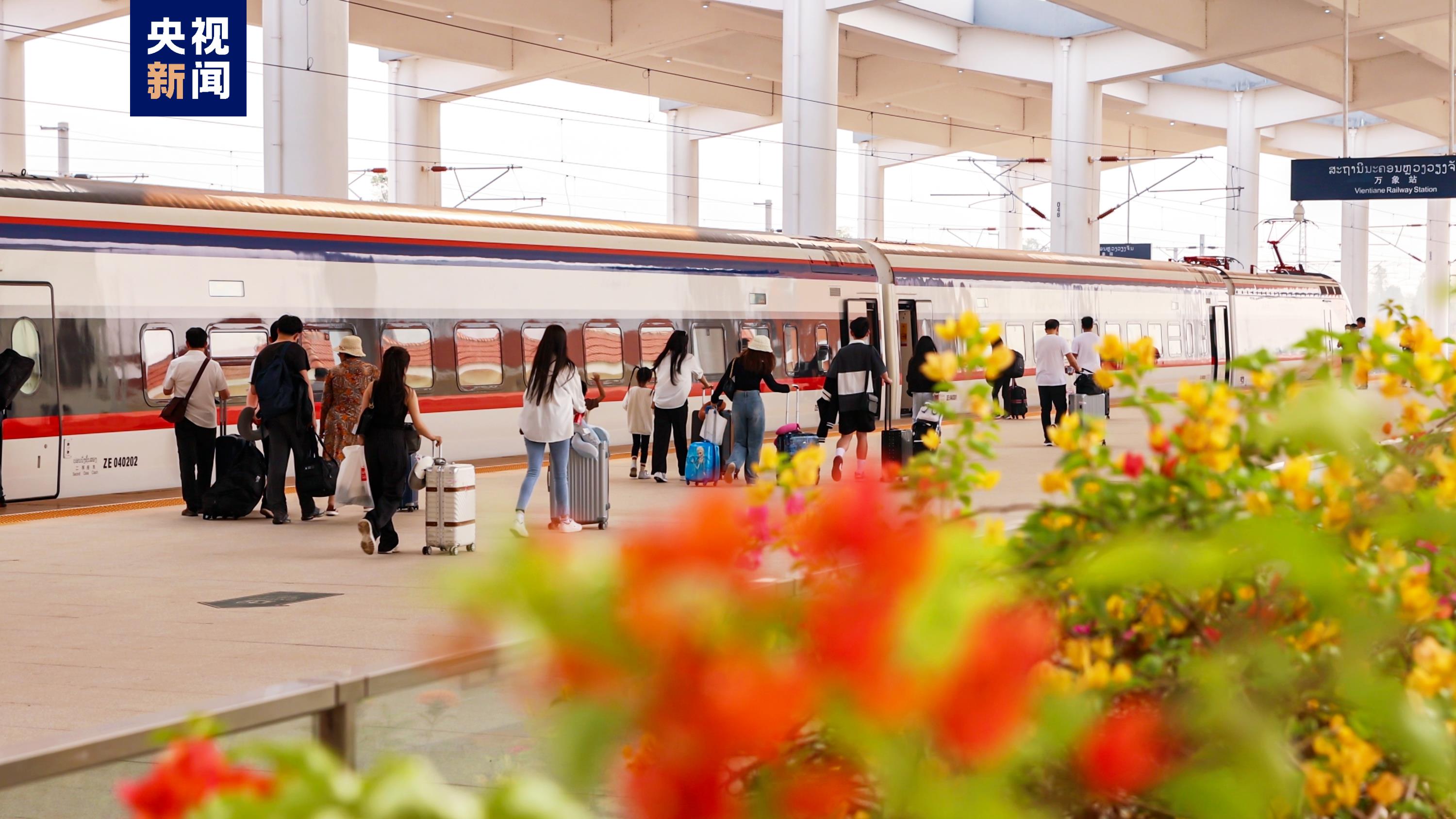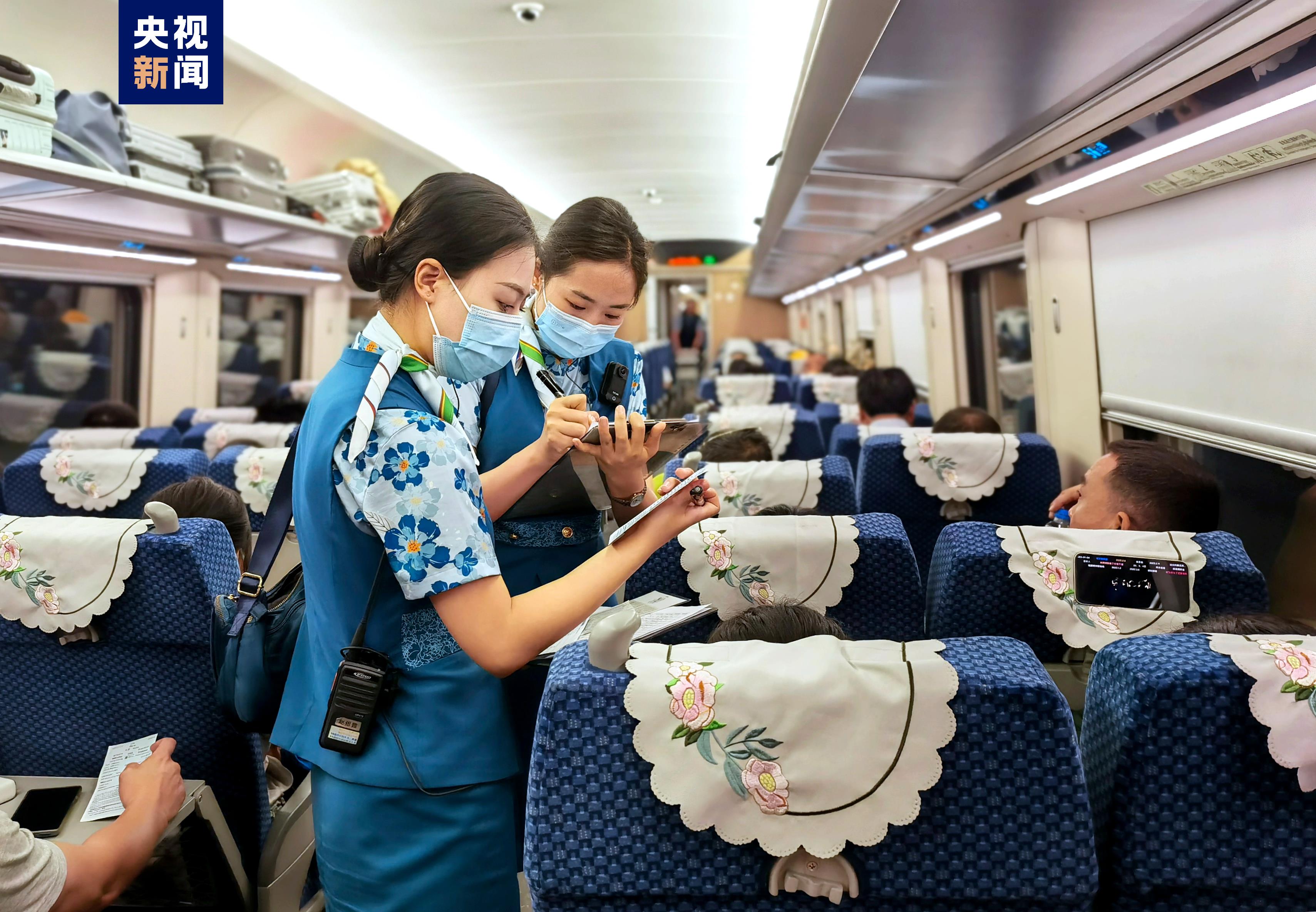01:05

A forum dedicated to the 10th anniversary of the China-proposed "Belt and Road Initiative (BRI)" and China-Laos green cooperation was held on Wednesday in Vientiane, Laos.
Co-hosted by the Chongyang Institute for Financial Studies, Renmin University of China and the Ministry of Industry and Commerce of Laos, the forum was the first overseas conference held to mark the 10th anniversary of BRI.
Nearly 200 political and business experts and well-known scholars from both China and Laos participated in the forum.
Under the guidance of projects such as the China-Laos Railway, the two countries will continue to deepen the concept of building a "community with a shared future for mankind" and establish a closer BRI international partnership, said the experts.

The first cross-border passenger train of the China-Laos Railway, D887, departs from Kunming, southwest China's Yunnan Province, for the Lao capital Vientiane, April 13, 2023. /CFP
The first cross-border passenger train of the China-Laos Railway, D887, departs from Kunming, southwest China's Yunnan Province, for the Lao capital Vientiane, April 13, 2023. /CFP
Dr Sitthiroth Rasaphone, acting director general, Center for Development Policy Research, Ministry of Planning and Investment of Laos, said the China-Laos Economic Corridor will provide opportunities for Laotian trade and investment activities and productivity improvements.
It will promote development and continued prosperity of the areas along the China-Laos Railway, improve the well-being of the Lao people, and further strengthen the infrastructure interconnection among countries in the region, Rasaphone said, adding that the project will also improve the level of economic cooperation, reduce circulation costs, enhance circulation efficiency and promote regional economic integration of China and Laos.
Lu Yang, a professor at Tsinghua University's BRI Strategic Research Institute, said the initiative is an international public product and an international cooperation platform, in which policy communication is an important guarantee and guide for the joint construction of the BRI.
Lu added that facility connectivity is the priority direction for the BRI, and trade unimpeded traffic is vital content, financial integration is major support, and people-to-people bonds are the foundation of the initiative.
During the forum, Liu Jintao, associate researcher at the Chongyang Institute for Financial Studies, Renmin University of China, released a research report titled "China-ASEAN Green Development under the "Belt and Road Initiative": Case Study of China-Laos Railway."
The report analyzes the prospects and demands of the Association of Southeast Asian Nations (ASEAN) in terms of green development, discussing challenges related to the economy, finance and trade faced by China and ASEAN amid BRI green cooperation.

Passengers at the Vientiane Railway Station in Laos. /China Media Group
Passengers at the Vientiane Railway Station in Laos. /China Media Group
China-Laos Railway
Liu's report puts forward the trade value, environmental value and financial value of the China-Laos railway to promote green BRI cooperation.
Since the 10th anniversary of the BRI, China and ASEAN have been working together to set a good example for Belt and Road cooperation in Southeast Asia, said the report.
In December 2021, the China-Laos Railway was put into operation. It was the first directly connected international railway mainly invested by China under the BRI. In the 18 months since its opening, the railway has shown a dynamic trend in both passenger and cargo volume, sending a total of 16.4 million passengers and 21 million tonnes of cargo.
In the future, the China-Laos Railway will become a key bridge for China and ASEAN countries to promote high-quality green development cooperation in Southeast Asia under the BRI, according to the report.
China and ASEAN have laid a solid foundation for green cooperation under the BRI.
ASEAN needs $200 billion in green investment every year a total of at least $3 trillion in green investment by 2030. It's sustainable debt financing scale exceeded $24 billion in 2021.
Under the BRI, the ASEAN green funding gap finally matched China's Belt and Road green investment, said the report.

Passengers on the first cross-border passenger train of China-Laos Railway which departed from Kunming, capital of southwest China's Yunnan Province, heading for the Lao capital Vientiane, April 13, 2023. /CFP
Passengers on the first cross-border passenger train of China-Laos Railway which departed from Kunming, capital of southwest China's Yunnan Province, heading for the Lao capital Vientiane, April 13, 2023. /CFP
The report also stated that the Belt and Road green cooperation between China and ASEAN faces multiple challenges.
The total population of ASEAN is nearly 660 million. Some ASEAN member states are still developing economies, and the objective conditions for economic development have made green and low-carbon upgrading and transformation more difficult for these countries whose per capita GDP is only $4,219.31 and whose urbanization rate is only 49.6 percent, said the report.
Moreover, the development of green financing markets among member states is uneven, and inadequate green infrastructure has raised investment barriers.
As an important bridge connecting China and Laos, the China-Laos Railway will provide traction in the green development of the BRI and facilitate more than 15 billion yuan (around $2.06 billion) in imports and exports every year. The railway has improved the quality and efficiency of cross-border trade and provided an efficient and convenient overland trade route, which is efficient, cost-effective, safe and shared, according to the report.

Staff members serve passengers on a train. /China Media Group
Staff members serve passengers on a train. /China Media Group
The China-Laos Railway opens up the Belt and Road green industrial chain and supply chain, promotes the application of sustainable development standards and certification in the supply chain, and relevant countries and enterprises can promote the certification system of green and sustainable development, encouraging enterprises in the supply chain to follow the principles of environmental protection and social responsibility, which helps to build a green supply chain and ensure the traceability and environmental friendliness of products.
The railway has also attracted and driven green investment, and has been instrumental in setting up a successful investment experience for other Belt and Road green cooperation.
For example, various modes of investment, including public investment, private investment and transnational investment, have been adopted to attract funding through the mechanism of benefit sharing and risk sharing, so as to encourage investors to share the economic benefits of the project and bear the corresponding risks and responsibilities in the project operation, which improves sustainability of the projects, according to the report.
Read More:
China-Laos Railway records 25,000 cross-border passenger trips
China-Laos Railway starts cross-border passenger services
(Cover Image: A train runs on the Chinese section of the China-Laos Railway. /China Railway Kunming Bureau)